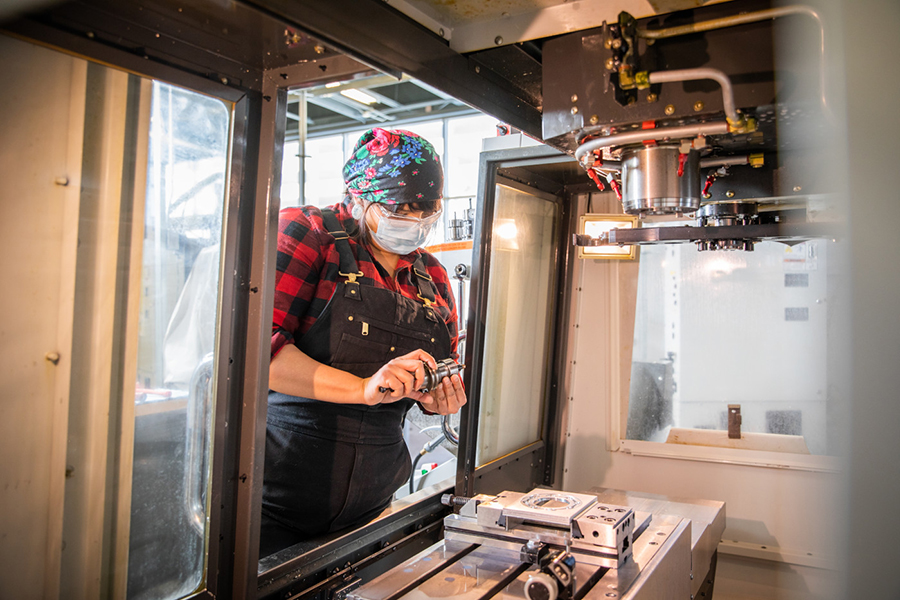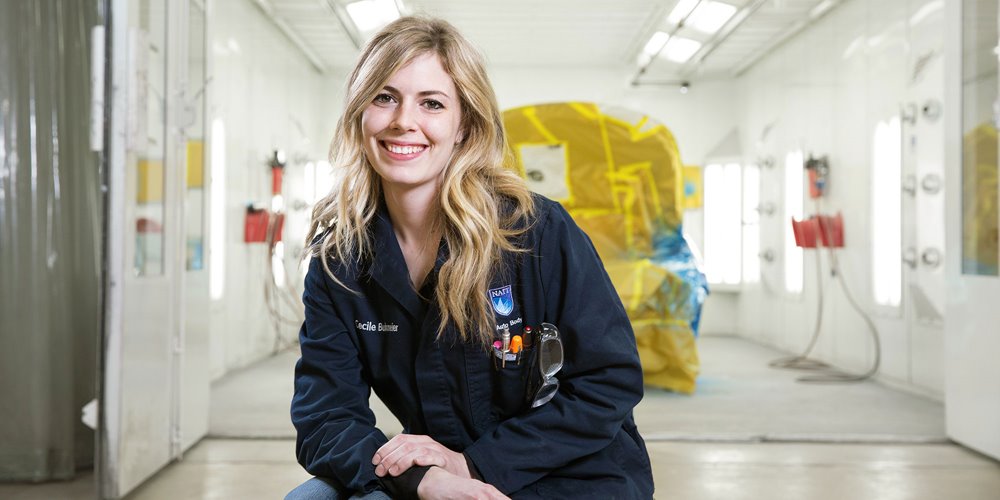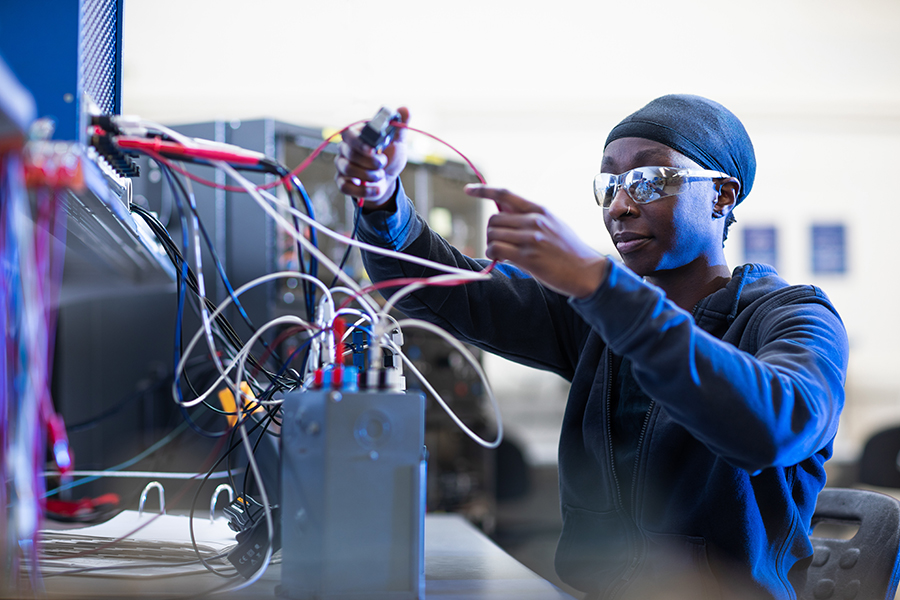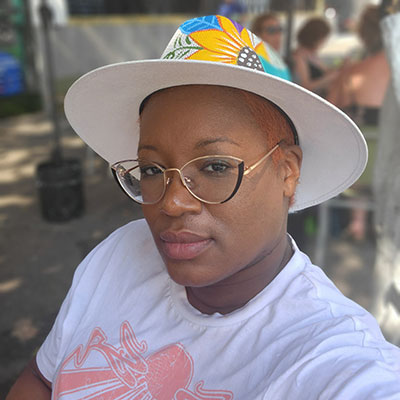New workshops a step toward addressing Alberta’s labour shortage
There’s a lot of work to be done in Alberta in the coming years but, currently, not enough workers to do it. In fact, there’s a shortage today, with about 100,000 vacancies in the province at the end of 2022. The Great Retirement won’t help, as baby boomers exit the workforce en masse, forcing employers to wonder what high-skilled labour will fill the void.
As dean of NAIT’s School of Skilled Trades, Matt Lindberg (Plumber ’01) believes he knows the source – and it’s not going to be what it was in the past.
“It's been long recognized that the apprenticeship spectrum doesn't truly reflect the diversity that we have … in the Edmonton region,” he says. With the shortage looming, “we can't continue to rely on the single white males that have dominated apprenticeship to fill these needs.
“And nor is it right for us to be doing so.”
To that end, the school is launching Next in Trades, a series of workshops and programs to highlight career opportunities for groups traditionally underrepresented in the field. The key, Lindberg adds, is ensuring that the trades – in the classroom and at the jobsite – provide a welcoming space for everyone “regardless of background.”
Here, he shares his perspective on how change will happen and the impact it will have not just on those looking for a rewarding career but on the province itself.
Techlifetoday: How do you think the trades came to be the way it is?
I think it's just historical practice. Back in the ’50s and ’60s, it was traditionally that the male who went off to work and the women stayed home. And so you create a culture that continues to have a male-dominated workforce.
In other areas, they've been successful in being able to diversify that workforce. Now is the time for us to be focusing that effort on skilled trades. It should have happened decades ago.
Are the trades starting to move in that direction on their own? Or do we need more trailblazers from underrepresented groups participating to help advance progress?

I think it's both. There are some large organizations that are focused on diversity and will not tolerate any type of discrimination. They've got a diversified workforce that helps bolster new ideas and new ways of doing things, and [they’re] creating a culture where all of those folks with different backgrounds and perspectives are going to contribute to a more resilient organization and a more resilient workforce.
And we've got some [organizations] that are coming onto that path but haven't gotten to that point yet.
We need to be working with [underrepresented] folks who are coming into this to say, ‘There is opportunity, there is a career. Are you going to face adversity? Probably. How can we support you so, when you encounter that, it isn't a barrier to you progressing?’
Recent legislation changes around apprenticeship training seem like they’re going to open the door to more opportunities to participate.
Absolutely. We're going to see a more diverse group making its way into the apprenticeship system.
We still have a lot of organizations that are going to continue to partner [apprentices] with a journeyperson who signs off on all of their competencies.
But an apprentice no longer needs to be sponsored only by a journeyperson. We've become sponsors at NAIT. We can make sure apprentices understand what they're going to experience as they go through their first period of education, and make sure they've got funding in place.
We also work with industry partners who are currently recruiting for apprentices, so there might be employment opportunities with those organizations.
With respect to addressing the labour shortage, that’s a bottleneck that’s been removed?

It is. Because of it, we’re going to see a significant increase in the number of first-year apprentices coming through. We've already seen some movement of that needle over this past academic year.
What have we done at NAIT to make our apprenticeship classrooms more welcoming?
We've provided different training and we have different resources on campus for our instructors and for our students. From an international perspective, our students have more access to the International and Intercultural Community Centre.
From an instructional perspective, we've had so many conversations and some really great training opportunities for folks who are going to be interacting with a more diverse group of individuals.
Another thing that has helped drive change is the diversity in the folks who are coming in to be instructors within our programs. We have female instructors come into our programs, for example, and female leaders who are chairs of apprenticeship programs. Twenty years ago, that would have been very rare.
What will real diversity in the trades look like?

Real diversity looks like the same type of community diversity that we see in our Edmonton region. We should be seeing the same ratios as what we've got for the LGBTQ+ community, Aboriginal communities, people of color – all of that should be truly reflective of what we actually see in our community.
There’s a ways to go, isn’t there?
Absolutely. And we’re up for the challenge.
Do you see a connection between achieving that and the future success of Alberta?
When you talk about the number of folks that are retiring out of organizations, that’s going to create an opportunity for new folks to move into those positions to drive change and influence how those organizations are going to move and respond in the future.
The more diverse voices that are at the table when that change is happening, the more prosperous our province and our economy will be.
A lived experience as a Black woman in the trades
 Samantha Richards (Plumber ’20) brought her perspective on being a Black woman in the trades to the inaugural Next in Trades event, where she joined a panel discussion on lived experiences.
Samantha Richards (Plumber ’20) brought her perspective on being a Black woman in the trades to the inaugural Next in Trades event, where she joined a panel discussion on lived experiences.
Before that event, NAIT spoke to her about what she values about her career and what she brings to it.
NAIT: What is meaningful to you about your work?
Samantha Richards: I am a red seal plumber and gasfitter class B.
I currently work in residential new construction as the field supervisor and quality control. I enjoy working in a field where the results of my efforts are tangible.
What is most meaningful to you about your education?
It allowed me to have the quality of life that I desired.
What do you bring to your work?
I am very detail oriented and believe in quality over quantity. There is a lot that goes into plumbing, things that have to be considered that most people don't think about till it happens. I'm good at looking at a situation and trying to come up with a plan that makes installation easier. I work well with others so that concerns can be dealt with before they turn into big issues.
Black Resistance was the theme for Black History Month in 2023. What does that mean to you?
Do the unexpected. Stand tall, stand proud. Continue the fight.
What does allyship look like for you?
I focus on the good that has been done by those in my community. It's easy to dwell in the crap but if you focus your energy on finding the good, life gets better.
Don't forget the bad stuff but learn from it and don't hate – it's easy to hate, harder to love. I love stories of Black people who have overcome. I want to celebrate and keep moving forward. Anti-racism and allyship is giving someone a chance based on their credentials, not on their skin colour or accent or social status.
Give someone a fair and equal chance and see what they do with it.
Banner image by ljubaphoto/istockphoto.com